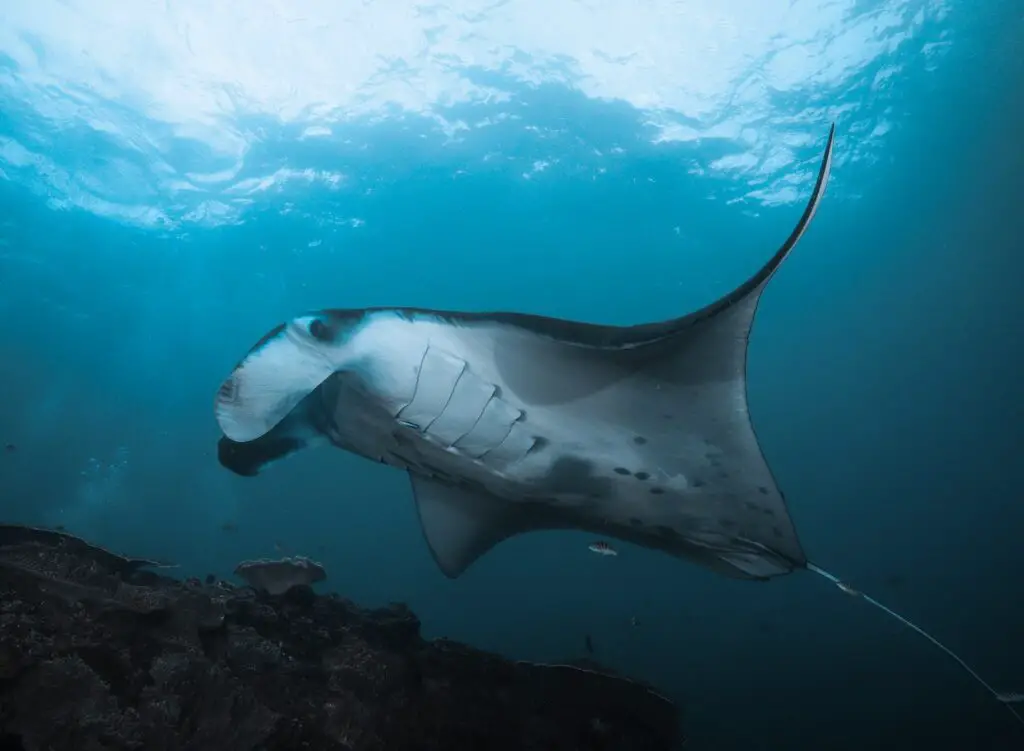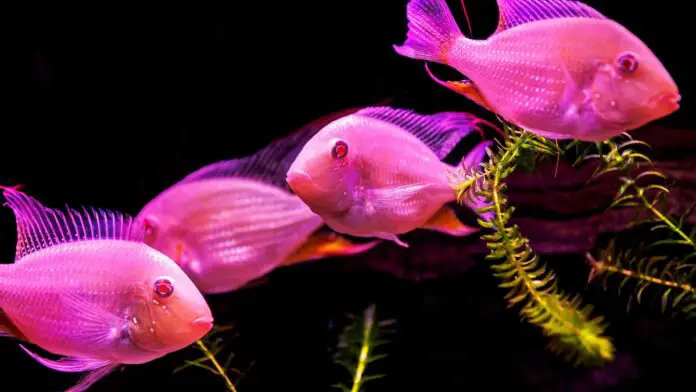Some links on this page may contain affiliate links which means that, if you choose to make a purchase using the link, Agricfy.com may earn a small commission at no extra cost to you. For more information, go to our Affiliate Disclosure Page!
Introduction
Fishes are poikilotherms or cold-blooded animals in which the body temperature is dependent on the temperature of the environment.
Fish is one of the most diverse groups of animals with over 20,500 species in existence and there are more species of fish than all the other vertebrates combined. Africa is endowed with varieties of fish but we still depend largely on fish species. Although remote, its demands are met in densely populated states in Nigeria, for example, Lagos, Kano, etc.
The demand for fish outweighs its supply because most of the fish that suffer in a natural body of water are overexploited, by fishermen, All sizes are over-harvested.
Instead of allowing fish to grow to a reasonable size and therefore yielding lower more than they ought to yield, the knowledge of fishery resources helps us to manage our fishery resources. Any group of fish whose members are similar in instruction and appearance and are capable of breeding together belong to the same species.
A genus encompasses a group of species that are closely related to one another, therefore usually similar in appearance they find it difficult to breed. The types of fish species can be grouped into two:
1. Teleost fish (bony fish)
2. Cartilaginous fish
Types of Fish Species
Teleost or Bony Fish

The first fish species is Teleost or bony fish. These are fish that have a bony structure and skeleton. It can be classified into two based on their habitat which is the freshwater fish and marine water fish.
Freshwater Fish: They are fish that live in freshwater such as rivers, lakes, etc their salinity is less than 1.05% and they have larger scales compared to marine water fish.
A. Tilapia species: Tilapia is a common name used for certain species of fishes belonging to the family Cichlidae, it is a freshwater species native to Africa, it is called Gargaza in Hausa and Epia in Yoruba.
Many of them are characterized by extremely specialized feeding habits which have enabled them to live in a particular environment. The most abundant fish species in west Africa and have a peculiar characteristic: double lateral line. Examples are Oreochromis niloticus (Nile tilapia), T. Zilli (Redbreast tilapia).
If you want to know more about tilapia fish, read this article on how to start a tilapia fish farm.
B. Clariid Catfish: Belongs to the family Clariidae. They have a broad and flattened heads and they are popularly called catfish. They are catfish because they possess barbel and it is difficult to place their back on the floor.
They have an anal fin which is very big. Examples are Clarias spp and Heterobranchus spp C. Tigerfish. It belongs to the family Alestidae, and it is named after its aggressiveness, its fiercely predaceous habits, and its appearance. Example: Hydrocynus forskalis, H. vittalus.
D. Moon Fish: They are referred to as moon fish because of their deep flattened body, they are abundant in swampy areas and grow very rapidly during their first year. Examples are: Citharinus citharas, C. latus, etc
E. Africa carp: it is a native of the South African continent, mostly found in abundance in the lake Malawi Juba system. It is a species of ray-finned fishes that belong to the family Cyprinidae. It is abundant in East Africa and the middle reaches of the Congo. Example: Labeo coubie, L. senegalensis
F. Upside down Catfish: it is also known as the squeaker catfish, it is found in lake Kariba, they are unusual, fun to catch, and taste good. they belong to the family Mochokidae, it is called upside-down catfish because of their bony shield on the head and nape. Example: Synodontis spp
G. Nile Perch: it is found in the Nile and other rivers in Africa, it is greenish or brownish in color, it has an elongated body, a rounded tail, a protruding lower jaw and two dorsal fins, the Nile perch fish belongs to the Centropomidae family. Example: Lates Niloticus.
H. Africa bony tongue fish: it is an abundant fish found in west Africa and readily.
Momyrus rume: They are popularly known as elephant fish. It has small scales, and tiny eyes and are usually covered by skin, all species have electric organs situated at each side of the terminal portion of the tail, their electric organ act as radar, vending into the water as electric impulses reflected by obstacles and other fishes.
They possess extraordinarily large brains that amount to 2% of their total weight which is proportionally 20 times greater than the brain of other fishes. Examples are Petrocephalus bane, mormyrid rume, etc.
They are available in the Niger river, it is elongated and robust in size, and it belongs to the Osteoglossidae family because of their tongue. example: Heterosis
Marine Water Fish: It is also called saltwater fish or sea fish, they have the following characteristics which are:
1. They have smaller scales
2. The pee is very concentrated urine because of the osmotic pressure 3. They have Trimethyl amine in their muscle
4. They live in an environment where the salt concentration is higher some examples of marine water fishes are:
a. Grunter (Pomadasy Jubelini): it is a deep and short sound fish considered as the noise made by a pig, they generate sound by grinding their teeth and the fish belong to the family Terapontidae.
b. Bobo Cracker (Pseudotolithus Elongatus): It is a ray-finned fish in the family Sciaenidae, it is also known as Corb or Giant captain fish.
c. Flat Sardine: It is found in the eastern parts of the mediterranean sea, they are abundant in warmer waters of the tropical and subtropical oceans and they belong to the family Clupeidae
d. African Brown Snapper: It is a species of marine ray-finned fish found in the eastern Atlantic ocean. It is also common in the brackish lagoons and it belongs to the family Lutjanidae.
Note: Some of the bony fishes are pelagic in nature, i.e, found swimming within the water column (sardines, tuna, and mackerels) while the others are demersal i.e. bottom dwellers (Clarias, croakers)
Cartilaginous or Elasmobranch Fish

They are fishes made of a skeleton made up of cartilage, and they are mostly marine. Examples are:
a. Electric ray fish: is a fish that consist of a group of rays, flattened cartilaginous fish with enlarged pectoral fins, they are known for being capable of producing an electric discharge ranging from 8 to 20 volts and it belongs to the family Torpedinidae. Example: Tetronarce nobiliana
b. Tiger shark: The fish lives in tropical waters in many places throughout the world, it has smooth, gray skin and a white underside or black vertical stripes at the back, the teeth are curved towards the mouth and it belongs to the Carcharhinidae. Example : Galeocerdo cuvier, Scoliodion terraenovae etc .
c. Sting ray fish: they are fish with wide, flat bodies, they do not have bones instead their bodies are supported by cartilage, they have broad fins that run the full length of their bodies giving them a flat, roundish shape, they belong to the family Dasytidae. Example: Dasyatis margarita.
Shape of Fish

There is however departure from this generalized shape in some fishes which includes:
1. Globe shape (globe form): the body shape consists of a round globe; they have short fins and large round eyes. Examples are Pufferfish (Tetraodon Fahaka, T. lineatus, etc)
2. Serpentine (Anguilliform shape): Anguilliform fish have a long, slender body and travel by anguilliform motion, long dorsal and anal fins that are continuous with caudal fin, for example, Silver/cutlass fish
3. Compressiform shape: It is also known as flat, they are flat from side to side look tall and thin when viewed from the front, move their tail from side to side and they are very flat in nature example moon fish
4. Depressed shape: These fish in this category are compressed dorsoventrally (from top to bottom) and live mostly near the bottom of the environment, for example, skates fish, spade fish, etc
Conclusion
Despite many variations in shape, the ground plan of the body organization in fish is bilateral symmetry. The body is covered by tough skin which is slime-coated due to the presence of mucous cells in the skin and the coloration of fishes is due to the color of cells in the skin.
The skin of most fishes is armored with scaleless which are the integumentary structure of the skin formed by the dermis except for a few fishes which are scales e.g lampreys and catfishes and those intermediate group with a nearly naked body with scales only in a few places or have scales reduced to a few prickles e.g mirror carp.
We have over a hundred species of fish which are distinguished by different features ranging from their habitat to their characteristics. Water is the main habitat of fishes and the salt concentration divided it into salt water. One with a salinity of less than 2% freshwater, where different kinds of fish are found due to their adaptation.

[…] implore you to read to the end to learn more about the different types of fish species for aquaponics, as I dive deep into all the relevant details you need to know to help you get the […]